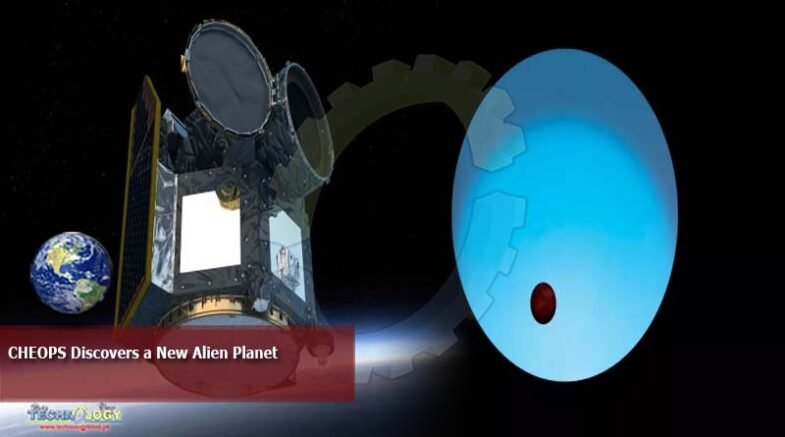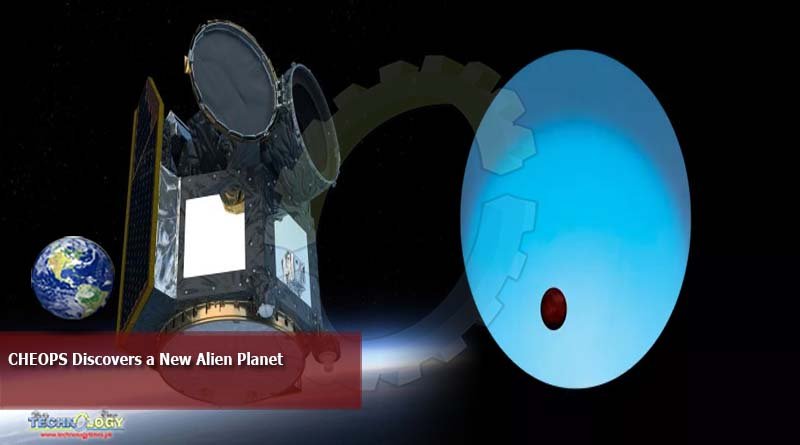It’s the first exoplanet found by the European CHEOPS spacecraft. Europe’s new telescope studying alien planets has created its first detailed portrait of a world, and it’s a weird one: hot and tilted around a warped star.

The European Space Agency (ESA) launched the Characterizing Exoplanet Satellite, nicknamed CHEOPS , in December; the spacecraft began science observations in April. CHEOPS isn’t designed to discover alien planets, but rather to inform scientists so that they can construct portraits of the worlds. And, in the mission’s first published results, scientists on the CHEOPS mission have done just that, forming a detailed picture of the planet WASP-189b, which was first detected in 2018.
“This first result from CHEOPS is hugely exciting,” Kate Isaak, project scientist for CHEOPS at ESA, said in a statement . “It is early definitive evidence that the mission is living up to its promise in terms of precision and performance.”
The CHEOPS observations suggest that WASP-189b is a strange world orbiting a strange star. Scientists had a hunch that might be the case, which is why mission scientists chose to study the planet so early in the spacecraft’s tenure. The star is superhot, so hot it looks blue, and the planet is so close to the star it orbits in just 2.7 Earth days.
“Only a handful of planets are known to exist around stars this hot, and this system is by far the brightest,” Monika Lendl, an astrophysicist at the University of Geneva in Switzerland and lead author of the new study, said in the same statement. “WASP-189b is also the brightest hot Jupiter that we can observe as it passes infront of or behind its star, making the whole system really intriguing.”
Observing a planet passing in front of its star is, at this point, fairly commonplace — the so-called transit technique is how NASA’s venerable Kepler Space Telescope and its successor, the Transiting Exoplanet Survey Satellite (TESS), spot planets blocking light as they pass in front of stars. Watching a planet pass behind its star is much more difficult, but WASP-189b is so bright that scientists can do just that.
“Because the exoplanet WASP-189b is so close to its star, its dayside is so bright that we can even measure the ‘missing’ light when the planet passes behind its star,” Lendl said. “It appears that the planet does not reflect a lot of starlight. Instead, most of the starlight gets absorbed by the planet, heating it up and making it shine.”
CHEOPS studied WASP-189 in March, April and June, catching the planet passing behind its star four times and in front of the star twice. From that data, scientists calculated some key features of the system.
First, the researchers determined that the planet is pretty toasty, at about 5,800 degrees Fahrenheit (3,200 degrees Celsius) — so hot that even iron would turn to gas. The scientists also calculated the planet’s size: about 1.6 times the radius of Jupiter.
The new CHEOPS observations also told scientists more about WASP-189’s star. “We also saw that the star itself is interesting — it’s not perfectly round, but larger and cooler at its equator than at the poles, making the poles of the star appear brighter,” Lendl said. “It’s spinning around so fast that it’s being pulled outwards at its equator!” The star also seems to have lighter and darker patches on its surface.
Unlike in our solar system, where planets orbit around the sun’s equator, WASP-189b orbits its star at a dramatic tilt, bringing it close to the star’s poles. That odd characteristic makes scientists suspect that the planet could have formed much farther away from the star, then some powerful gravitational force — perhaps another star — kicked the planet inward and askew.
The CHEOPS scientists say that this sort of work is precisely what the telescope was designed to do: take a known exoplanet and give scientists a more detailed view of the world than a passing shadow.
“CHEOPS will not only deepen our understanding of exoplanets,” Isaak said, “but also that of our own planet, solar system, and the wider cosmic environment.”
The research is described in a paper accepted for publication by the journal Astronomy & Astrophysics.
Originally published by Space
